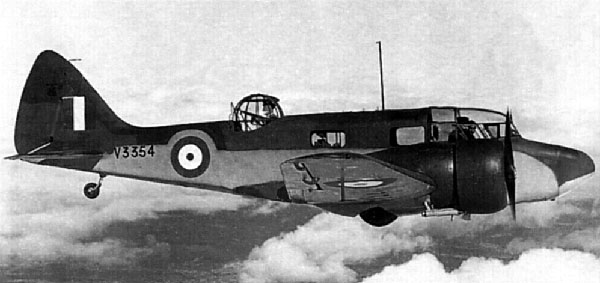
During the morning of 12th October 1943 the crew of this aircraft were undertaking a cross country training flight, on board was an instructor with three pupil pilots. During the first part of the flight after taking off from Dalcross near Inverness they were to cross the Cairngorm mountains and were begining to climb to clear the cloud-covered mountains. Soon after the instructor ordered the pupil pilot to climb the aircraft the aircraft became caught in a strong down-draught. The aircraft began to loose height and the instructor took control of the aircraft but dispite applying full power to the engines he was unable to prevent the aircraft from entering cloud and hitting the side of Braeriach having almost reached a stalled state of flying because of the wind. The four men in the aircraft were very lucky and all survived the crash which occured on a reasonably flat part of the mountain at around 1150 metres above sea level. It is to be noted that Braeriach rises to 1296 metres high and is the third highest mountain in Great Britain, given we now know more about air accidents across the UK than these airmen probably did at the time they were probably unaware of just how lucky they were as almost all air accidents in these high mountains resulted in many fatalities.
As a sad footnote to this account; eighteen months later Blenheim Z7356 would crash on virtually the same point on Braeriach but with it's entire crew being killed. This Blenheim incident is recorded on it's own webpage on this website as I located both sites on the same day dispite poor weather. Wreckage from both aircraft is so close to the main route from the Lairig Ghru to Braeriach that they are refered to on many walking websites and confusion over which aircraft is which. This Oxford's burnt wreckage is the collection found beside the main path with four stainless steel main sections and an undercarriage leg just below the main collection. The scattered and un-burnt wreckage and engine to the east of the main path is that of the Blenheim. No trace of the two Oxford engines remain on Braeriach and it seems likely that they were removed perhaps when the site was "cleared" when the main airframe was chopped up and burnt at the site where the remains are to be found on the main path today.
Instructor - "F/O" Eric William Hutchins RAFVR (144637). Injured.
Pupil Pilot - F/Sgt John Turner RAFVR (1525011). Injured.
Passenger (Pilot) - F/O Geoffrey Charles Vaudrey RAAF (407919), of Willunga, South Australia. enlisted Adelaide. Slightly injured.
Passenger (Pilot) - F/O Raymond McGregor RNZAF (412709). Slightly injured.
Eric Hutchins was born on 5th January 1915 in Kings Norton, Worcestershire. After initial training in the RAF he was posted to 41 Squadron on 11th November 1941 who he flew with until Spring 1942. He received his commission to P/O on probation (emergency) on 16th April 1943 rising to F/O (war subs) on 16th October 1943. Many accounts of this incident list his rank as being F/O when the aircraft crashed however as this was four days before his promotion to F/O so this must therefore be incorrect. It is possible that he had been granted the rank of Acting Flying Officer in the Summer months of 1943 or it could be that when the accident report was compiled the notification of his promotion had come through and the error appeared when the report was typed up. He recovered from his injuries and rose to F/Lt (war subs) on 16th April 1945. Post-War he remained in the RAFVR and finally relinquished his commission of F/Lt on 2nd November 1960.
John Turner recovered from his injuries and received his commission to the rank of P/O on probation (war subs) on 29th May 1945 rising to F/O (war subs) on 29th November 1945. Nothing more of him is known and it is assumed that he left the RAFVR in the years that followed when the forces reduced their numbers.
Geoffrey Vaudrey was born on 28th September 1917 in Willunga, South Australia. He enlisted on 16th October 1941 in Adelaide and was awarded his Wings on 18th September 1941. After arriving in the UK and while undergoing training at 2 SFTS at Brize Norton he was involved in a flying accident on 14th March 1942 when the aircraft, Oxford AT731, had taken off for a night training flight with Sgt Vaudrey at the controls. The aircraft swung on take off and struck trees and crashed into buildings of a farm seriously injuring both him and his instructor, P/O F D M Sloan. It was deemed that Sgt Vaudrey's lack of night flying experienced was a major factor in the accident occuring and that his instructor should have taken control of the aircraft sooner to avoid the crash. After the crash on Braeriach he again recovered from his injuries and completed his training. He was later posted to 15 Squadron and survived the War.
Raymond McGregor completed his training and was posted operationally. He was listed as missing on 31st December 1944 having been posted to 138 Squadron. 138 Squadron were an SOE unit. He was the pilot of Stirling LK283 and undertaking Operation Crupper 10, a drop zone in Norway. The aircraft failed to return with all seven airmen being recorded as Missing.
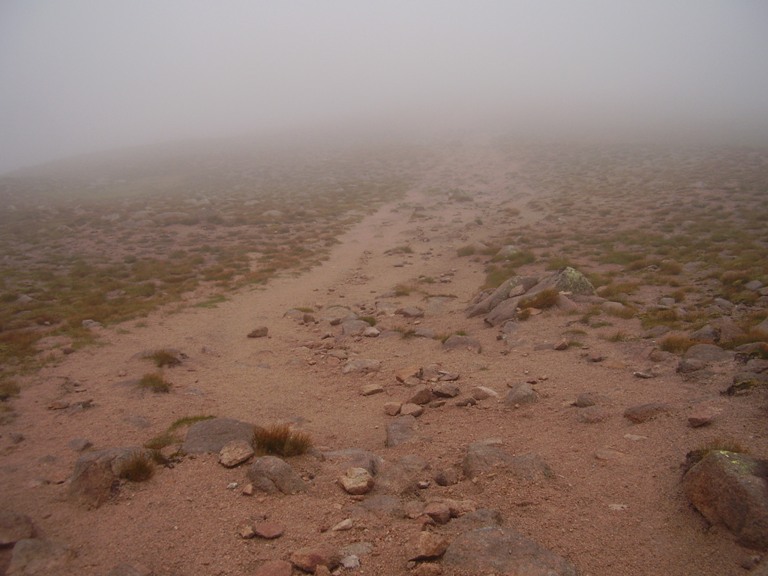
I visited the crash site in August 2011 during a long walk from the Sugar Bowl, through the Chalamain Gap and the Lairig Ghru onto Braeriach, then over Cairntoul and eventually out to the Linn of Dee. Basically a monster of a days walk. Time at this crash site was therefore limited but I located the area next to the path where the aircraft was chopped up and burnt as well as some larger heavy sections of the aircraft slightly lower down the mountain which included an undercarriage leg. The photograph above shows the area where this Oxford crashed and does contain peices of the aircraft although none appear visible on the photograph.
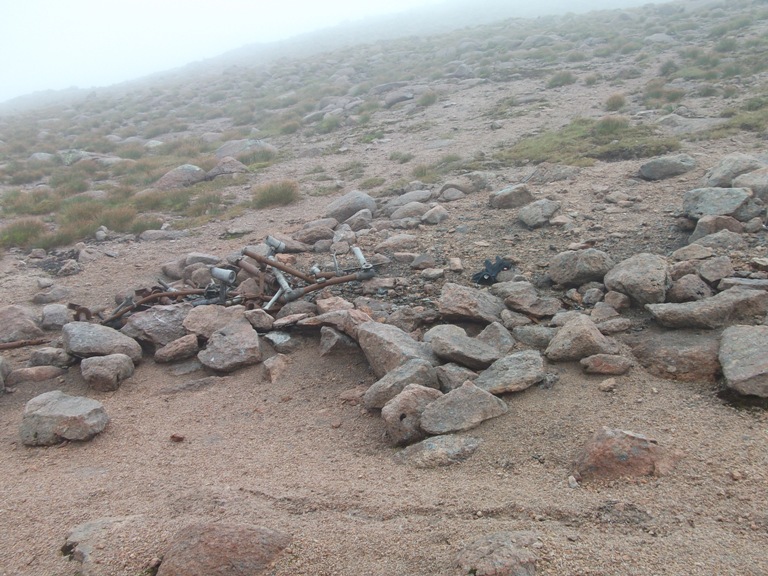
These two photographs show the area of where the aircraft was burnt and some of the large pieces collected together at this location.
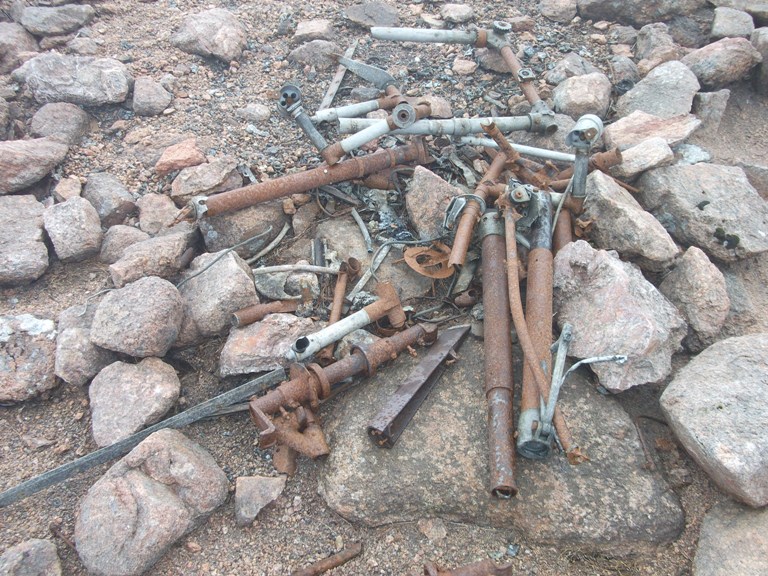
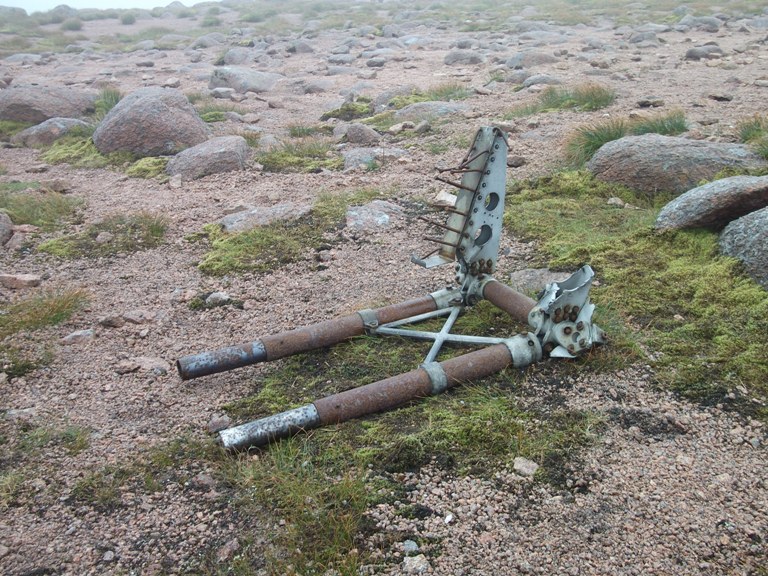
A complete undercarriage leg was found slightly lower down the mountain with a good number sequence found on it. The "102" prefix indicates it as being from the Oxford rather than the Blenheim which crashed in the same area. This number also is identical with that of an Oxford undercarriage section that crashed on the North Yorkshire Moors in 1945.
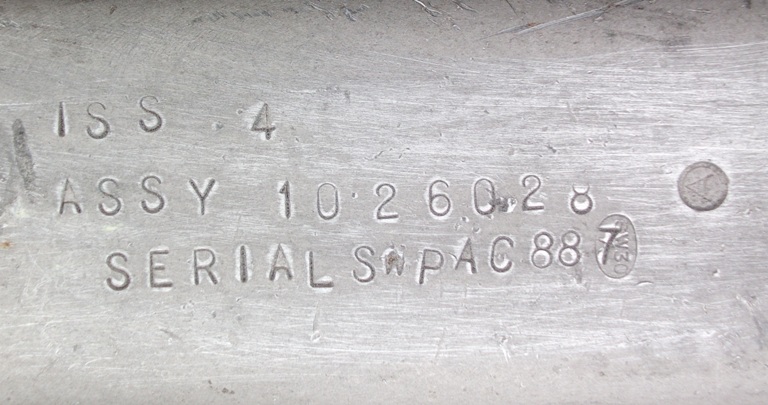

One of four similar parts at the crash site made from stainless steel and in a near perfect condition.